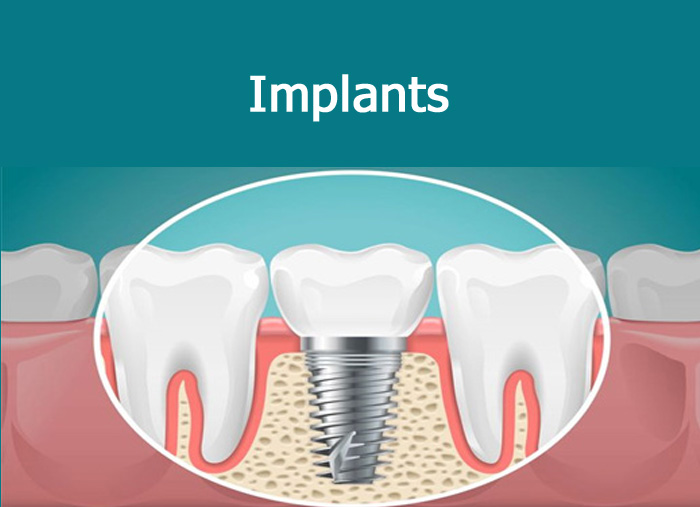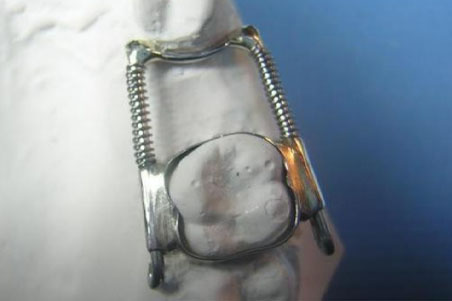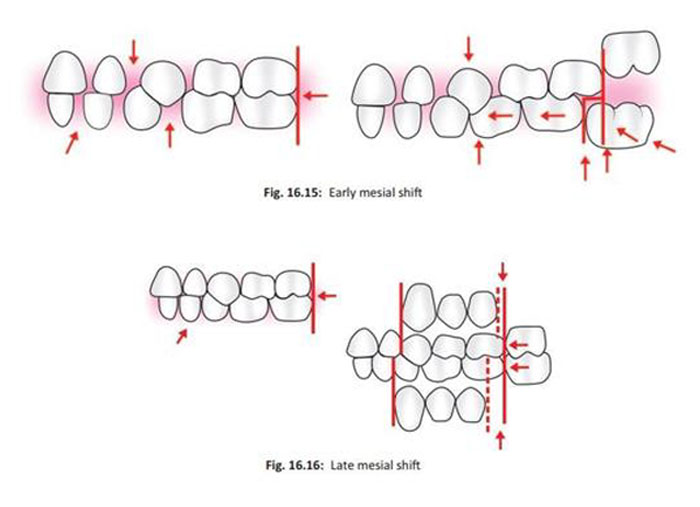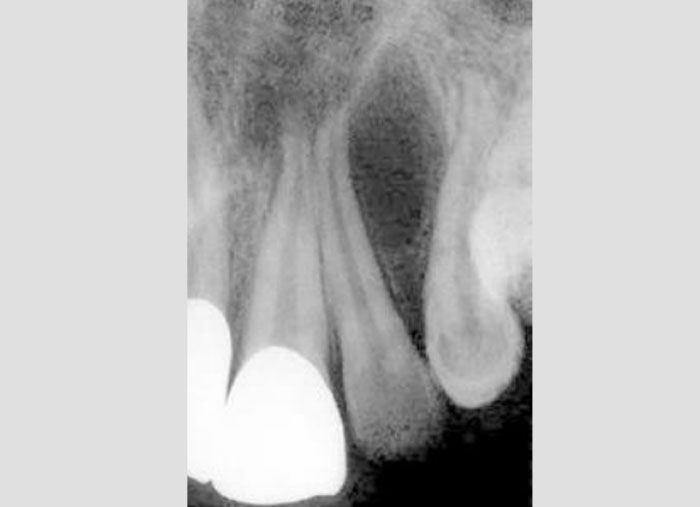- NEED HELP? CALL US NOW
- +919995411505
- [email protected]
Implants
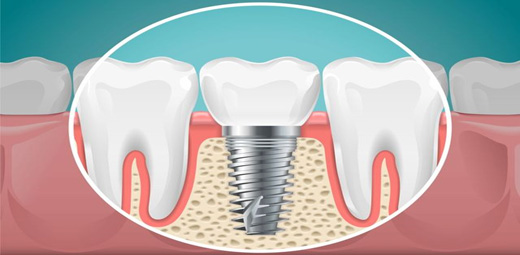
A “root replica” or a “root form” implant is a titanium fixture inserted in the jaw to act as a tooth root and anchors a restoration (single crown, bridge, or denture). The final restoration looks, feels, & functions like a natural tooth.
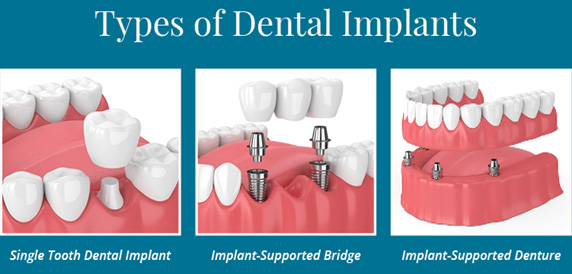
- They replace missing tooth roots and form a stable foundation for replacement teeth that look, feel and function like natural teeth.
- Dental implants also help preserve the remaining bone by providing the stimulation previously provided by the natural tooth roots & prevent future bone loss.
OSSEOINTEGRATION
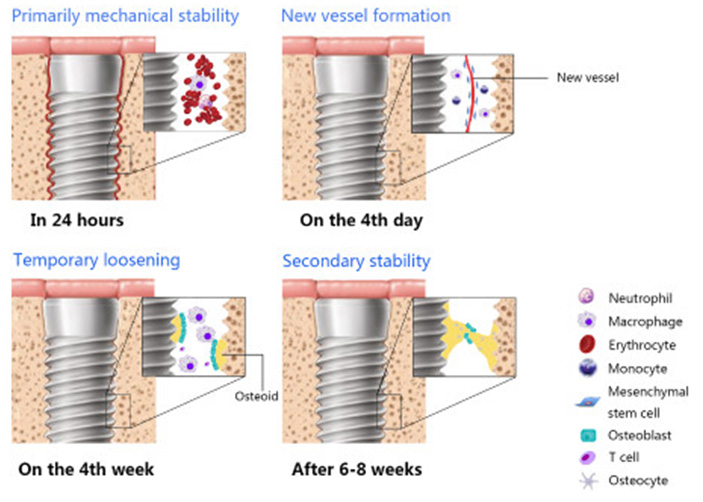
- “A direct structural & functional connection between bone and the surface of a load-carrying implant”(Branemark 1960)
- Fibro-osseous integration
-soft tissue (fibers) interposed between the implant surface & bone
- Bio integration
-implant is covered with bioactive material like hydroxyapatite
PERI-IMPLANT MUCOSA
- Dense lamina propria covered by stratified squamous keratinized epithelium
- Implant-epithelium junction is analogous to the JE

- Epithelial cells attach to the titanium implant by means of hemi desmosomes &basal lamina
- Sulcus around implant lined by sulcular epithelium
Indications for Implants
- Replace one or more teeth as single units
- Support a bridge and eliminate the need for a partial denture
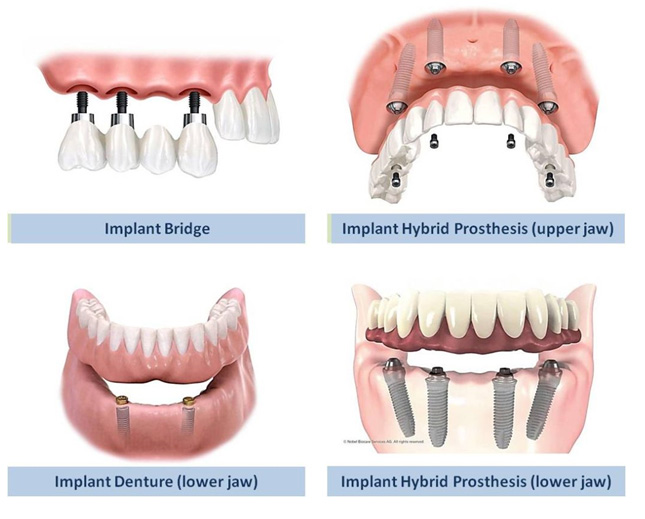
- For completely edentulous patients with advanced ridge resorption.
- Prevent bone loss and gum recession.
- For partially edentulous arches where RPD weakens the abutment
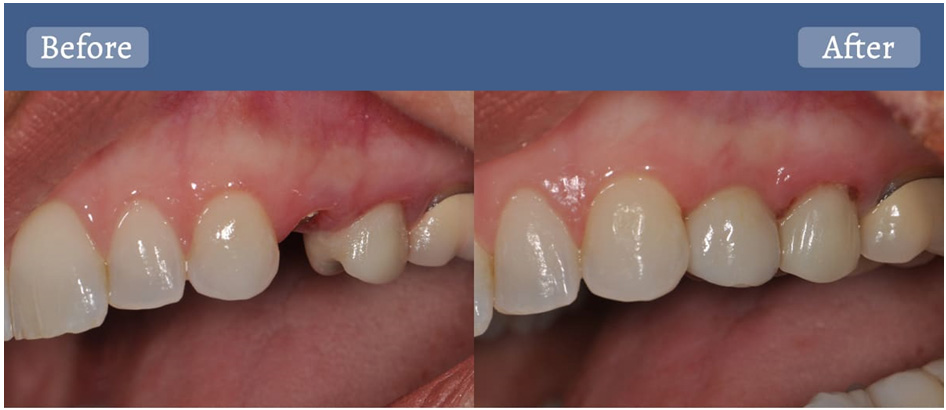
- Improve overall psychological health
- Improve aesthetic appearance of the teeth and mouth (Enhance patient confidence in smiling/speaking)
- Eliminate need to involve adjacent teeth.
Contraindications to Dental Implants
- Longer duration of treatment.
- Poor oral hygiene
- Smoking and alcohol abuse
- Implant procedures may be emotionally challenging for some patients
- Bruxism is a significant component of failed implants.
- Severe bone loss
- Patients with systemic disorders especially that of cardiovascular, respiratory, and gastrointestinal systems are not good candidates for implants.
- High dose irradiation.
- Patients with seriously compromised immune systems and other diseases that may slow the healing process are not good candidates.
Classification of implants
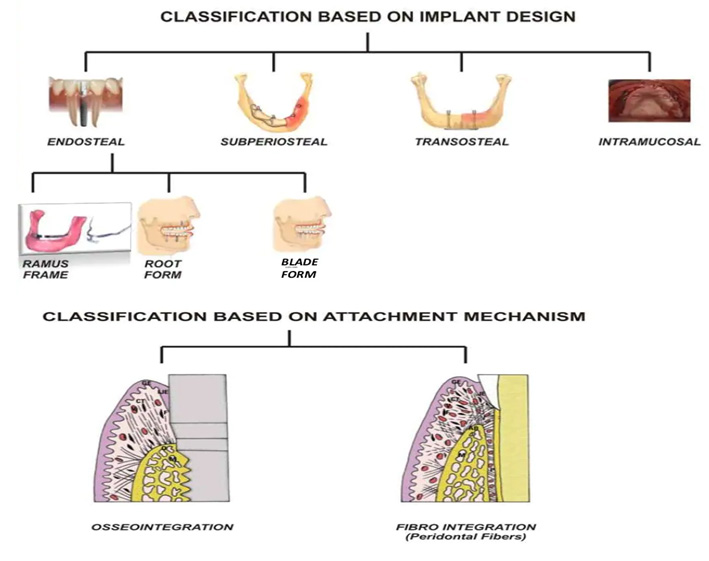
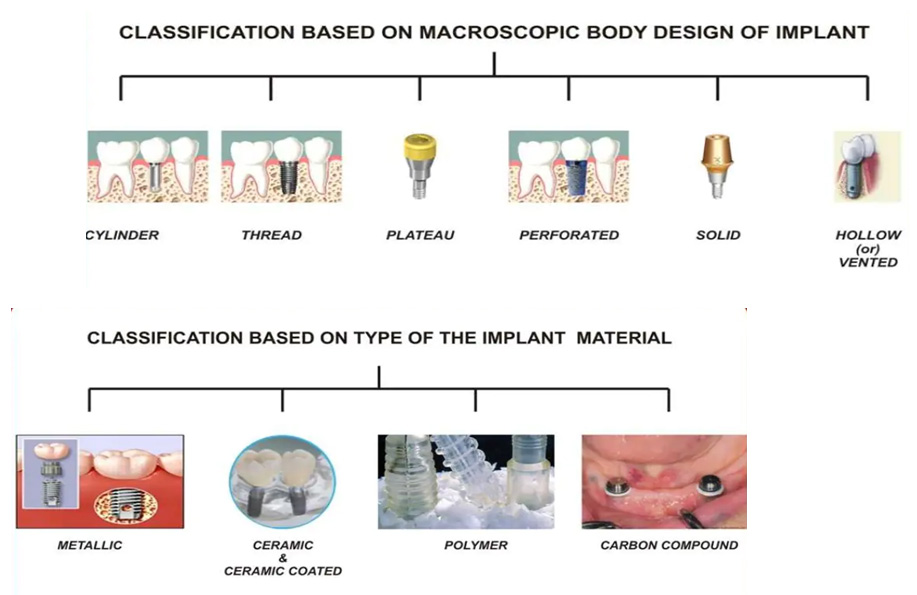
Procedure for dental implants
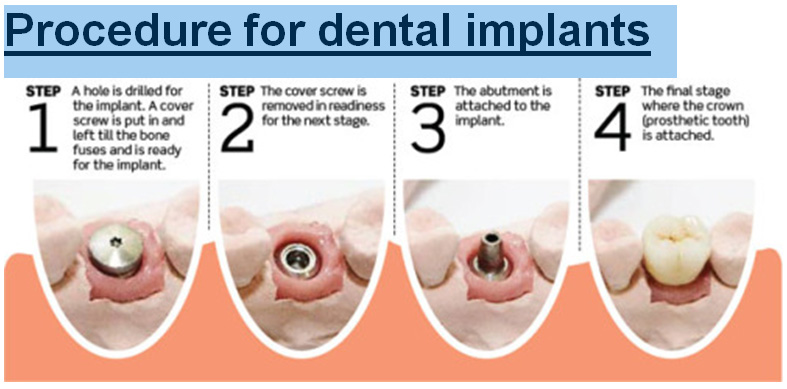
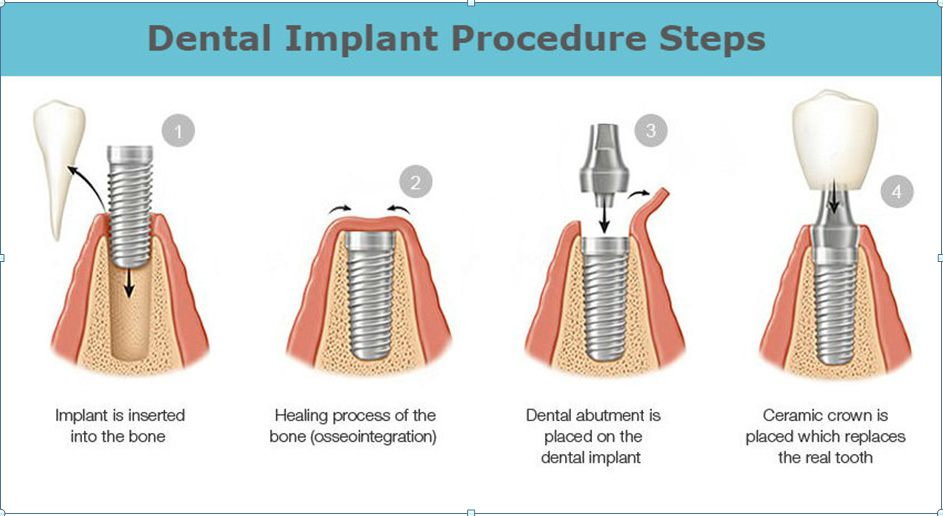
COMPLICATIONS
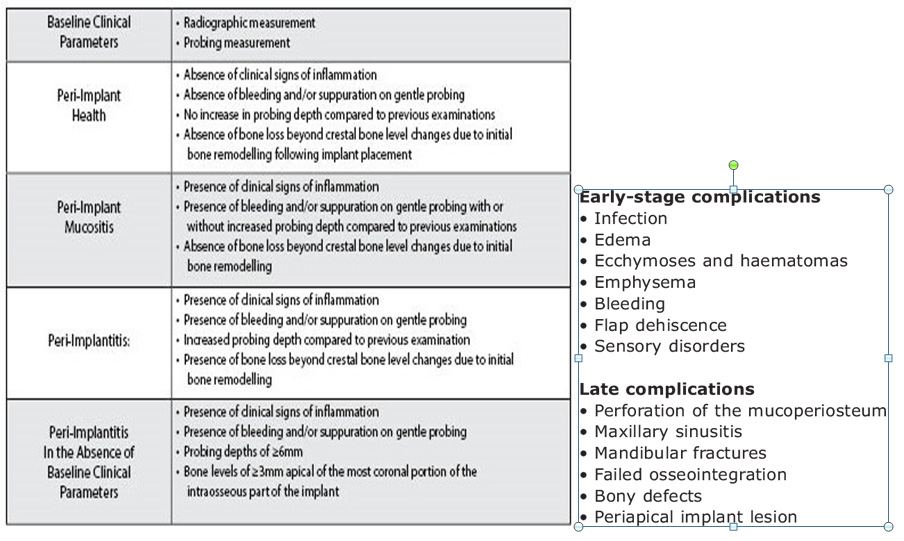
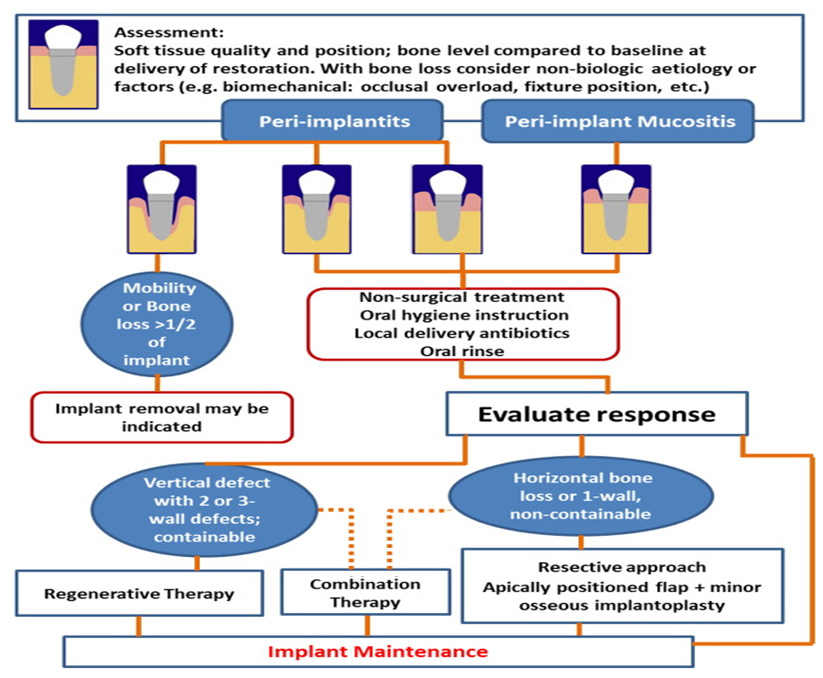
MCQ
1. In smokers the incidence of periodontal diseases are
a) 2-6 times
b) 6-10 times
c) 10-14 times
d) No effect
Answer: A
Cigarette smokers are up to 5 times more likely than non-smokers to develop severe periodontitis, and the risk of the disease increases with the amount of cigarettes smoked.
Click here to view QA and Description for Implants

